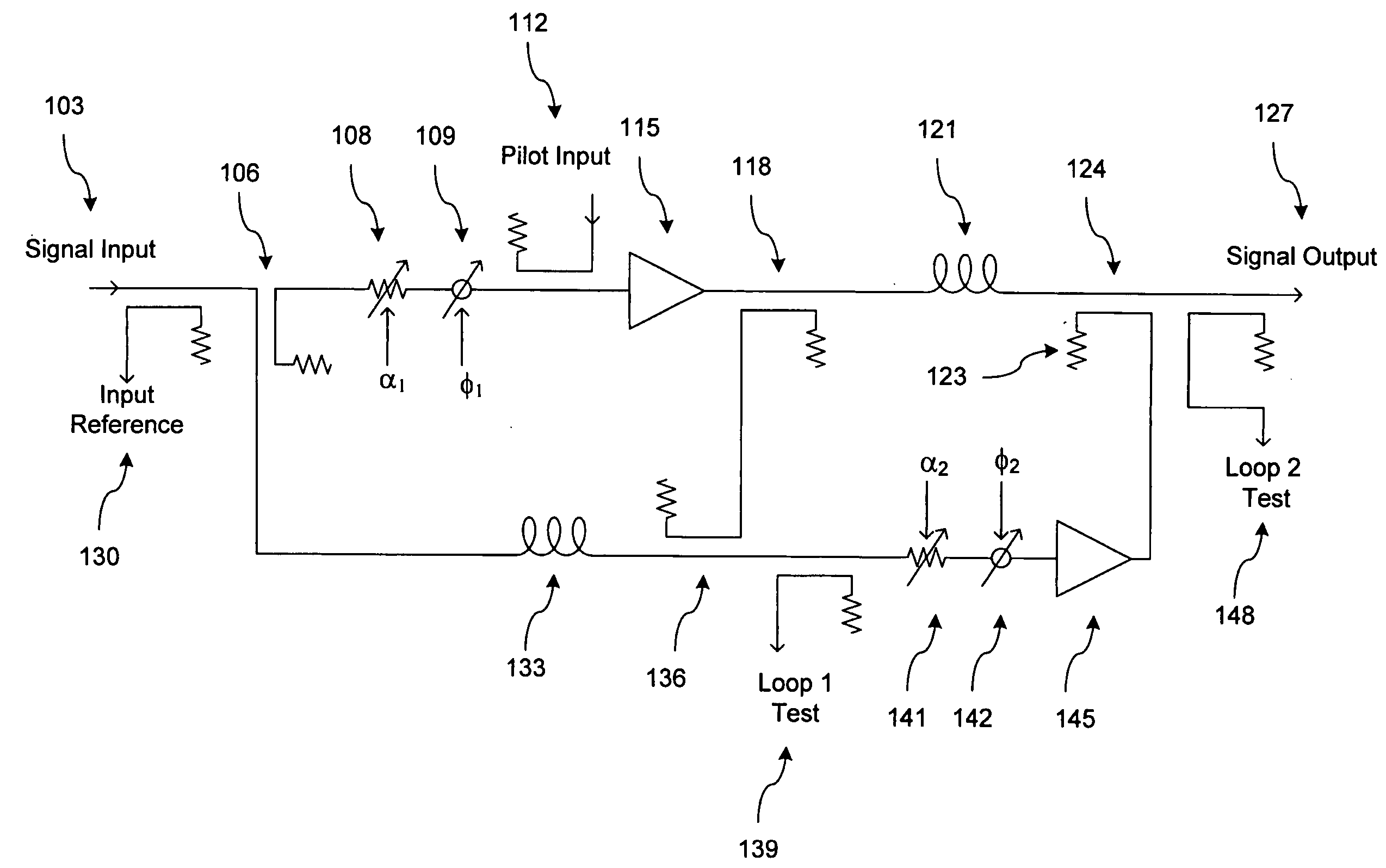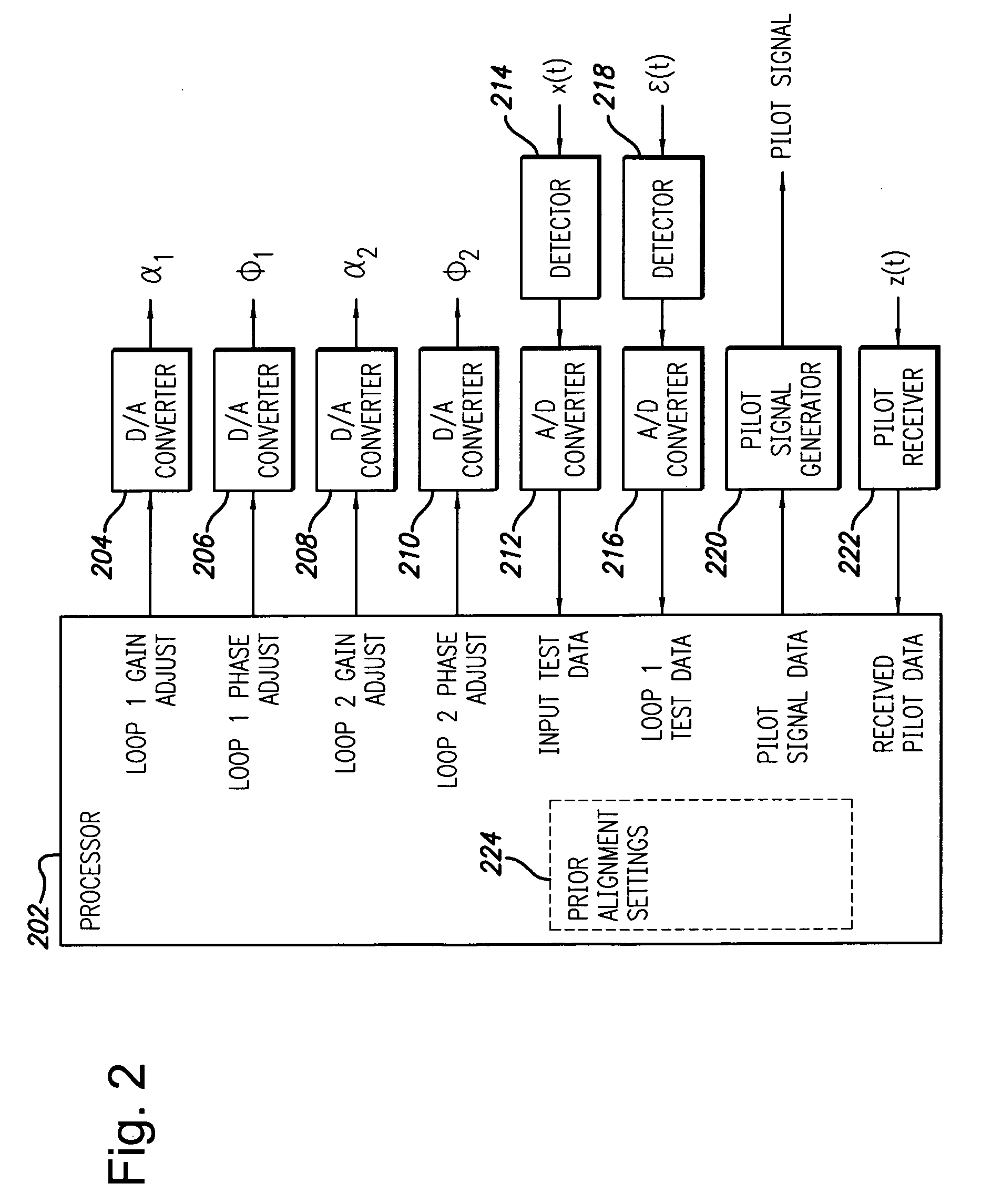System and method for control of loop alignment in adaptive feed forward amplifiers
- Summary
- Abstract
- Description
- Claims
- Application Information
AI Technical Summary
Benefits of technology
Problems solved by technology
Method used
Image
Examples
first embodiment
[0080] The first embodiment of the alignment and step size update processing is shown in FIG. 6. Within the first embodiment, there are three ways to compute the alignment adjustment. To select the correct method, the processing tests if the descent direction is undefined and if the descent direction has reversed from its most recent value. The two most recent non-collinear descent directions are retrieved (603). If the most recent non-collinear descent θnc(k) is undefined, the alignment adjustment (645) is computed as follows: (Δαk,Δϕk)=(αk-2,ϕk-2)-(αk,ϕk)2.(Eq. 26)
[0081] The alignment is updated (648) using (Eq. 25), with the discount factor set to unity (βk=1). Using (Eq. 26) reduces the size of the triangle defined by the three points while ensuring that the next three points are non-collinear. As a result, the iterative sequence will not stall before reaching the minimum. For the next iteration, the step size is reduced (651): sk+1=sk2.(Eq. 27)
[0082] The new step size is st...
second embodiment
[0094] A second embodiment of the alignment and step size update is shown in FIG. 7. The primary difference is that it selects the step size based on the cancellation residual: that is,
sk=f{Pk} (Eq. 36)
where f{} is a specified function.
[0095] In the second embodiment, the most recent values of the non-collinear descent direction and measurement Pk are retrieved (703). The descent direction is tested (706). If it is undefined, the alignment adjustment (718) defined by (Eq. 26) is used. The alignment is updated (721) using (Eq. 25), with the discount factor set to unity (βk=1).
[0096] If the descent direction is defined (706), the step size is computed (709) using the mapping in (Eq. 36). The alignment adjustment (712) is based on (Eq. 23). The alignment is updated (715) using (Eq. 25), with the discount factor set to 0.7 (βk=0.7). Although the mapping in (Eq. 36) can be obtained from experiments, it can be seen that (Eq. 31) is a potential cancellation residual to step size mapp...
PUM
 Login to View More
Login to View More Abstract
Description
Claims
Application Information
 Login to View More
Login to View More - R&D
- Intellectual Property
- Life Sciences
- Materials
- Tech Scout
- Unparalleled Data Quality
- Higher Quality Content
- 60% Fewer Hallucinations
Browse by: Latest US Patents, China's latest patents, Technical Efficacy Thesaurus, Application Domain, Technology Topic, Popular Technical Reports.
© 2025 PatSnap. All rights reserved.Legal|Privacy policy|Modern Slavery Act Transparency Statement|Sitemap|About US| Contact US: help@patsnap.com



